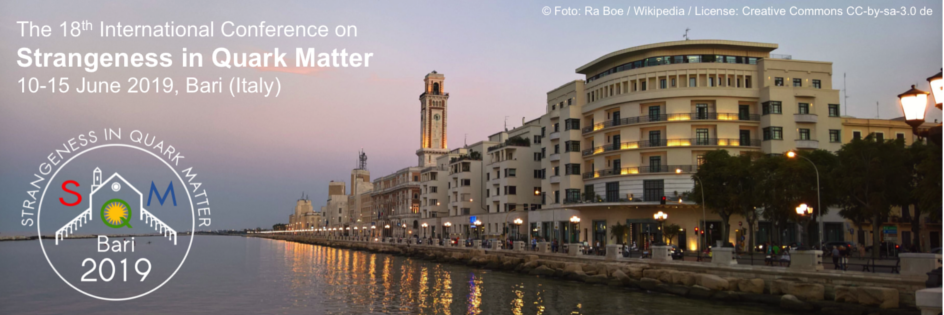Speaker
Description
Heavy flavour probes provide important information about the in-medium properties of the quark gluon plasma produced in heavy-ion collisions. In this work, we investigate the effects of (2+1)d event-by-event fluctuating hydrodynamic backgrounds on the nuclear suppression factor and momentum anisotropies of heavy flavour mesons and non-photonic electrons [1,2]. Using the state-of-the-art D and B mesons modular code (the so-called "DAB-mod"), updated recently with heavy-light quark coalescence, we perform a systematic comparison of different transport equations, including a few energy loss models and a relativistic Langevin model with different drag parametrizations [3]. To explore the effects of system size and structure on hard probes [4], we compare the D0 meson $R_{AA}$ and two-particle cumulants $v_2\{2\}$ and $v_3\{2\}$ for various colliding nuclei and energies: Au-Au$^{197}$ collisions at 200 GeV, Pb-Pb$^{208}$ collisions at 5.02 TeV, prolate and spherical Xe-Xe$^{129}$ collisions at 5.44 TeV [5], Ar-Ar$^{40}$ collisions at 5.85 TeV and O-O$^{16}$ collisions at 6.5 TeV and compare them to the latest experimental data. To investigate the sensitivity of hard probes to initial fluctuations, we compare MCKLN and Trento (tuned to IP-Glasma) initial conditions in Pb-Pb collisions at 5.02 TeV. We show the small dependence of the $R_{AA}$ , $v_2\{2\}$ and $v_3\{2\}$ observables over these initial fluctuations within our model, but also their strong impact on the trend of the multiparticle cumulant $v_2\{4\}/v_2\{2\}$ ratio as a function of centrality and its value in most central collisions. This ratio, known to be a probe of the initial conditions and flow fluctuations in the soft sector [6], is shown to be also driven in the hard sector by the system size and geometry [3]. We finally study the correlations and decorrelations of the heavy meson and all charged particle flows for different harmonics and compare our predictions with ALICE measurements of D meson $v_2$ vs bulk $q_2$ in Pb-Pb collisions at 5.02 TeV [7].
[1] C. Prado, J. Noronha-Hostler, R. Katz, A. Suaide, J. Noronha and M. Munhoz, Nucl. Phys. A 967 (2017) 664-667 [arXiv:1704.04654].
[2] C. Prado, J. Noronha-Hostler, R. Katz, A. Suaide, J. Noronha and M. Munhoz, Phys. Rev. C96 (2017) no.6, 064903 [arXiv:1611.02965].
[3] R. Katz, C. Prado, J. Noronha-Hostler, A. Suaide, J. Noronha and M. Munhoz, Hard Probes 2018 proceeding, Heavy-flavor dynamics in event-by-event viscous hydrodynamic backgrounds [arXiv:1812.08009].
[4] Z. Citron et al., ''Future physics opportunities for high-density QCD at the LHC with heavy-ion and proton beams,'' [arXiv:1812.06772]
[5] See J. Noronha-Hostler’s talk at Santa Fe Jets and Heavy Flavor workshop 2019,
https://indico.bnl.gov/event/5039/contributions/26266/
[6] P. Alba, V. Mantovani Sarti, J. Noronha, J. Noronha-Hostler, P. Parotto, I. Portillo Vazquez, and C. Ratti, Phys. Rev. C 98, 034909 (2018) [arXiv:1711.05207v2].
[7] See ALICE collaboration CERN-EP-2018-260 paper and R. Katz’s flash talk at Hard Probes for our preliminary predictions (https://indico.cern.ch/event/634426/contributions/3003663/)
| Track | Heavy Flavour |
|---|
